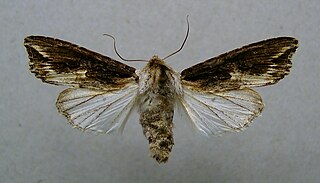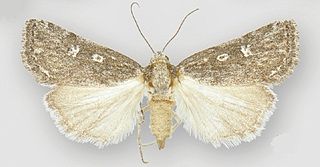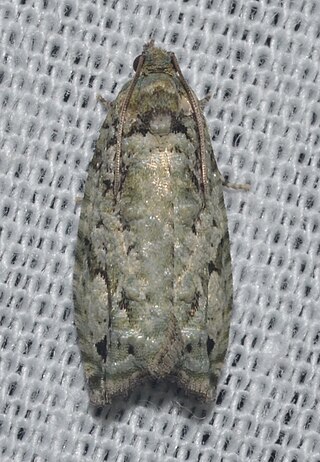
The Noctuidae, commonly known as owlet moths, cutworms or armyworms, are a family of moths. They are considered the most controversial family in the superfamily Noctuoidea because many of the clades are constantly changing, along with the other families of the Noctuoidea. It was considered the largest family in Lepidoptera for a long time, but after regrouping Lymantriinae, Catocalinae and Calpinae within the family Erebidae, the latter holds this title now. Currently, Noctuidae is the second largest family in Noctuoidea, with about 1,089 genera and 11,772 species. This classification is still contingent, as more changes continue to appear between Noctuidae and Erebidae.

Apamea is a genus of moths in the family Noctuidae first described by Ferdinand Ochsenheimer in 1816.

Amphipyrinae is a subfamily of owlet moths in the family Noctuidae. There are more than 50 genera and 210 described species in Amphipyrinae, although the classifications are likely to change over time.

Agrochola is a genus of moths of the family Noctuidae. The genus was erected by Jacob Hübner in 1821.

Archanara is a genus of moths of the family Noctuidae.

Drasteria is a genus of moths in the family Erebidae.

Egira is a moth genus in the family Noctuidae. This genus has several species, including Egira crucialis, that are on wing in winter and early spring. They are sometimes, along with members of the Orthosia genus, called early spring millers.

Fotella is a monotypic moth genus of the family Noctuidae. Its only species, Fotella notalis, is found in the US in the Big Bend region of western Texas, southern Arizona, southern California and southern Nevada. The habitat consists of dry deserts. Both the genus and species were first described by Augustus Radcliffe Grote in 1882.

Lithophane is a genus of moths of the family Noctuidae. They spend the winter as adults. Some species are capable of feeding on other caterpillars or on sawfly larvae, which is rather uncommon among Lepidoptera.

Psaphida is a genus of moths of the family Noctuidae. The genus was erected by Francis Walker in 1865.
Abagrotis orbis, the well-marked cutworm or Barnes' climbing cutworm, is a moth of the family Noctuidae. The species was first described by Augustus Radcliffe Grote in 1876. It is in southwestern North America, extending eastward across the plains and with a large disjunct population in dune habitats in the southern Great Lakes area. It extends into western Canada only in the southern interior of British Columbia and southern Alberta and Saskatchewan.

Globia is a genus of moths called "arches", in the family Noctuidae. There are about seven described species in Globia. They are found in the holarctic.

Globia subflava, the subflava sedge borer or yellow sedge borer, is a moth of the family Noctuidae. The species was first described by Augustus Radcliffe Grote in 1882. It is found in North America from Nova Scotia west to British Columbia, south to New Jersey in the east and Utah and California in the west.

Globia algae, the rush wainscot, is a moth of the family Noctuidae. The species was first described by Eugenius Johann Christoph Esper in 1789. It is found in central and southern Europe, Turkey, Armenia, northern Caucasus, south-west Siberia.

Globia laeta, the red sedge borer, is a moth of the family Noctuidae. The species was first described by Herbert Knowles Morrison in 1875. It is found in North America, including Ohio, Illinois, New Jersey and Ontario.
Xestia normaniana, or Norman's dart, is a moth of the family Noctuidae. The species was first described by Augustus Radcliffe Grote in 1874. It is found in North America from Nova Scotia across southern and central Canada to Alberta. In the eastern United States it ranges from Maine to eastern Minnesota, and south along the Appalachians to western North Carolina. It has recently been recorded from Tennessee.
Spargaloma is a monotypic moth genus in the family Erebidae. Its only species is Spargaloma sexpunctata, the six-spotted gray. Both the genus and species were first described by Augustus Radcliffe Grote in 1873. It is found from coast to coast in lower Canada south in the east to Florida, Mississippi and Arkansas, in the west to California.

Oxycnemis advena is a moth of the family Noctuidae first described by Augustus Radcliffe Grote in 1882. It is found in southwestern North America in the mountains of southern Arizona, eastern Nevada, southern California and southern Baja California.
Noctuini is a tribe of owlet moths in the family Noctuidae. There are at least 520 described species in Noctuini.

Proteoteras moffatiana, known generally as the gray-flanked proteotera or maple shoot borer, is a species of tortricid moth in the family Tortricidae.














